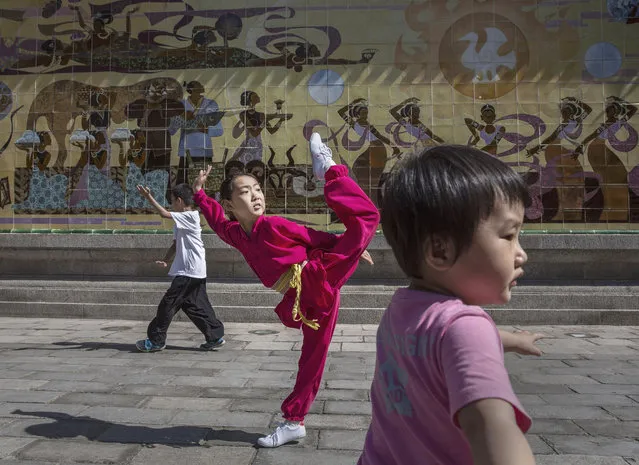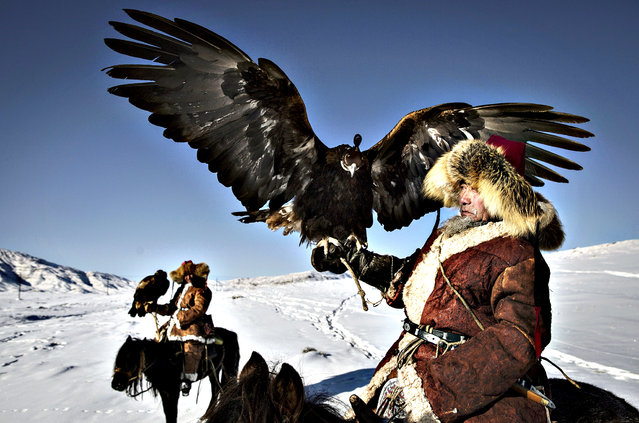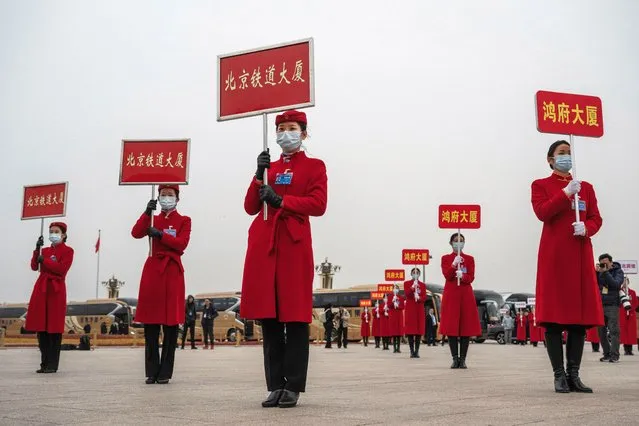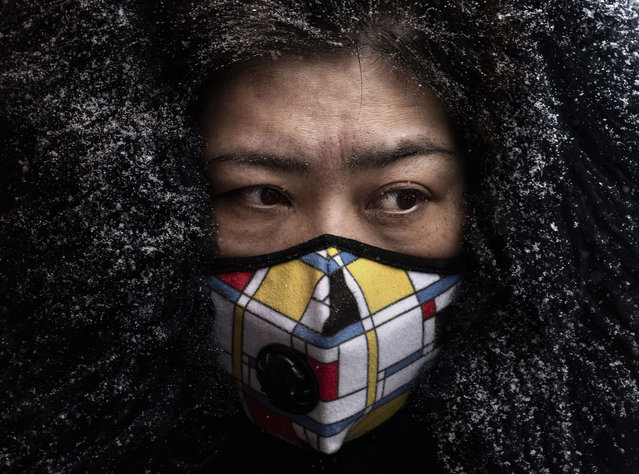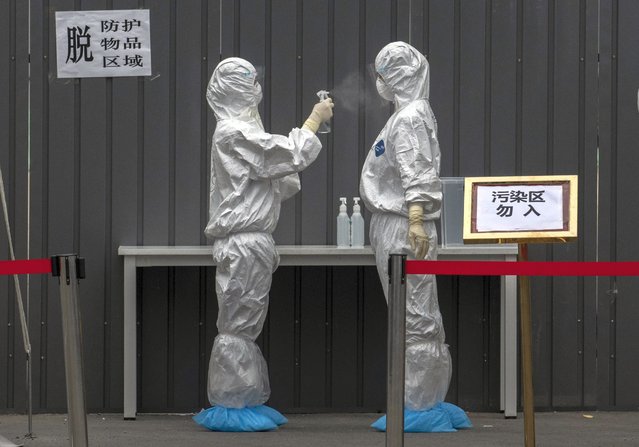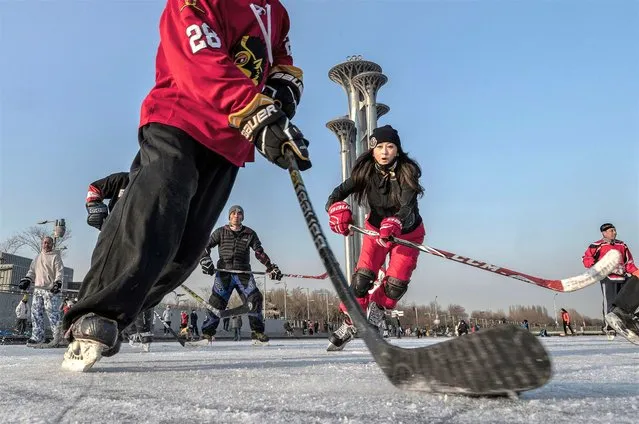
People play ice hockey in front of the Olympic Tower near the National Stadium at Olympic Park on January 13, 2022 in Beijing, China. Playing host to the 2022 Winter Olympics has boosted the popularity of winter sports and outdoor activities in many parts of China, with the government pouring billions of dollars into developing programs, athletes, and fans. With more outdoor skating rinks, ski resorts, and other activities luring people outside, the ice and snow sports boom has created nearly 350 million winter sport enthusiasts since Beijing"u2019s successful Games bid in 2015, according to officials. China is seeking to become a winter sports destination as the global snow sports industry eyes growth in the world second largest economy. (Photo by Kevin Frayer/Getty Images)
